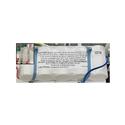
Sealed Lead Acid (SLA) Nickel–Metal Hydride (NiMH) Battery Finder
Battery Finder
At Emergency Lighting, we stock all the essential battery styles from top manufacturers to ensure your emergency lighting and exit signage is always up to the task when you need it most.
There are many variations of rechargeable batteries available depending on the specific needs of your application. See the descriptions below to find the right battery to meet your needs.
- Sealed Lead Acid (SLA) batteries
- Valve Regulated Lead Acid (VRLA) batteries
- Nickel–Cadmium (NiCd) Batteries
- Nickel–Metal Hydride (NiMH) Batteries
- Alkaline Batteries
Sealed Lead Acid (SLA)
SLA batteries are the most reliable and widely used power source. They can recharge much faster than a flooded lead acid battery, and the calcium added to their plates helps reduce water loss. Sealed lead acid batteries can recycle the gases they produce and can prevent damage to the battery when the charge rate is controlled. These batteries must always be kept in upright positions and protected from leakage.Nickel–Metal Hydride (NiMH)
NiMH batteries can have two to three times the capacity of an equivalent size NiCd, and their energy density approaches that of a lithium-ion cell. Nickel–Metal Hydride batteries are good for high current drain applications because of their low internal resistance.
The disadvantage of NiMH batteries is their high rate of self-discharge. NiMH batteries typically lose 4% of their charge per day of storage. LSD NiMH batteries significantly lower self-discharge, but at the cost of lowering capacity by about 20%.

